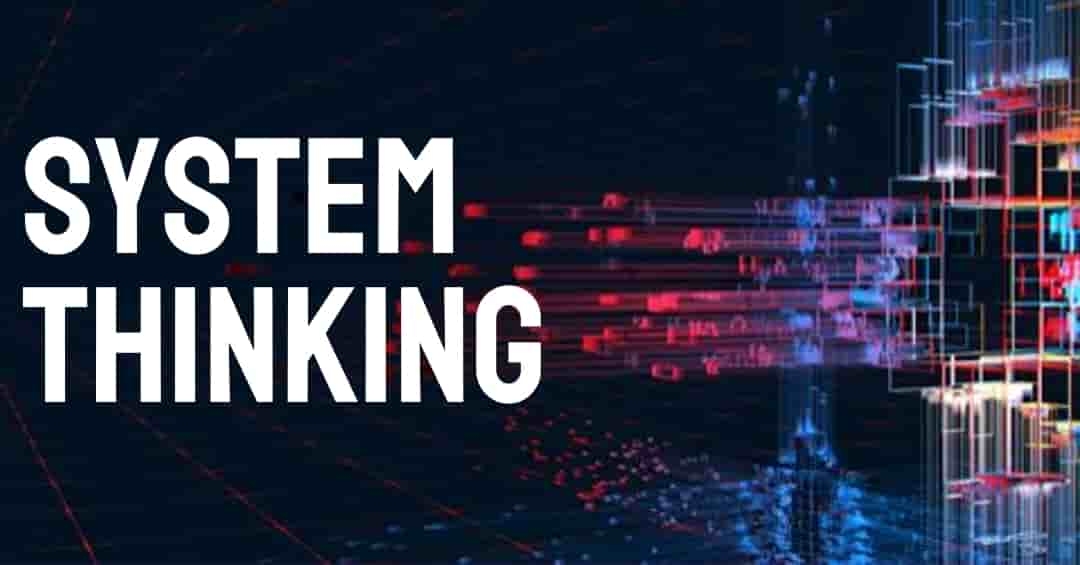
UNDERSTANDING SYSTEM THINKING
Summarized By Orisatuyi Muyiwa
In the context of organizational transformation, leaders often emphasize the pursuit of operational excellence. However, operational excellence is not an end in itself; it serves as the foundation for broader system-wide transformations. This paradigm shift involves systems thinking, a framework that addresses the transformation of individuals, organizational culture, and strategic execution. The speaker underscores the importance of achieving excellence as a prerequisite for meaningful transformation.
Digital transformation in organizations is likened to a journey where pursuit of excellence and collaborative teamwork serve as crucial initial steps. Evaluation frameworks act as launching pads for driving transformative changes within an organization. an example; it is common that large-scale enterprises that first prioritize operational excellence in manufacturing or regulatory processes before scaling up.
For individuals, we should emphasize the pivotal role of systems thinking in personal and organizational growth. The notion that every system is perfectly designed to yield its current results prompts reflection on one’s current circumstances and the potential for future achievements. This perspective extends to organizations, where operational efficiency serves as a springboard for future scalability.
The narrative delves into the dynamics of setting goals and the critical role of systems in achieving them. The assertion that one does not rise to the level of goals but falls to the level of the system underscores the importance of systematic structures in realizing objectives. The example of an organization aiming to purchase a high-value machine illustrates the need for a systematic structure capable of handling the required financial capacity.

Distinguishing Between Design and Capacity.
Design involves conceptualizing structures, while capacity encompasses the tangible resources, both human and technological, required for real-world interaction. it is important to build both a well-designed system and the capacity to execute it effectively.
The concept that a bad system will consistently outperform a good person underscores the profound impact of systemic design on individual success. The analogy of nations operating within either disorderliness or orderly systems draws attention to the consequences of adopting random access versus systematic approaches to governance, planning, and resource allocation.
Two Methods of Achieving Results:
Random access and building systems. Nations or individuals operating in disorderliness experience unpredictable outcomes, leading to erratic successes and failures. In contrast, building systems provide predictability, stability, and a path to sustainable growth.
Embracing systems thinking involves a disciplined approach to understanding the whole picture, recognizing interrelationships, and navigating the dynamics of time and context for effective decision-making and goal attainment.
In Summary:
Systems Thinking Overview:
Systems thinking is a comprehensive and strategic framework that considers the holistic interplay of various elements within an organization or individual pursuit. It involves understanding structures, processes, outcomes, and dynamic dimensions such as time, stakeholders, and culture.
Structures and Processes:
Structures refer to the formalized aspects of an organization, such as policies, resource allocation, authority distribution, hierarchy, specialization, and infrastructure. Processes, on the other hand, encompass the actions and activities involved in day-to-day operations, bridging the gap between strategy and execution.
Time Dynamics:
The dimension of time is crucial, involving historical perspectives, present scenarios, and individual responsibility. Time teaches through evaluated experiences, reflections, and the ability to evolve. Effective time management, coupled with deep learning and engagement, is vital for achieving meaningful outcomes.
Stakeholder Dynamics:
Stakeholders contribute diverse opinions, interests, priorities, desires, approaches, and perspectives. Recognizing and understanding these variations is essential for effective decision-making and system optimization.
Culture and Context:
Culture and context play a pivotal role, influencing outcomes and impacting the way people operate within a system. Evaluating the prevailing ethical values, principles, language, standards, symbols, institutional memories, and histories is crucial for understanding the broader ecosystem.
Outcome Evaluation:
Every system is designed to produce specific results. The outcomes, influenced by the integration of structures and processes over time, must be subjected to thorough evaluation. This evaluation helps determine whether the processes are on the right track and if adjustments are needed.
Capacity Building and Transformation:
Systems thinking emphasizes capacity building, focusing on both design and capacity-building phases. The goal is not just to analyze current outcomes but also to envision future possibilities. Operational excellence serves as a launching pad for transformation, providing the foundation for scalability, sustainability, and overall success.
Deep Learning and Breakthrough Awareness:
Systems thinking involves continuous learning, sound analysis, and breakthrough awareness. It requires asking the right questions, understanding the context, and evolving in thinking and decision-making. This approach is fundamental for achieving predictability, scalability, and sustainability.
Transformational Impact:
In the pursuit of transformation, a transformed mind is crucial. This involves maturity in thinking, seeing, learning, speaking, and writing. Integrating and connecting missing details leads to a new awareness that drives a higher level of change over time.
